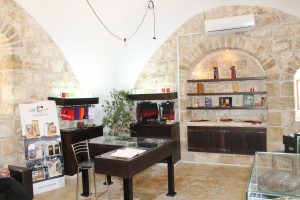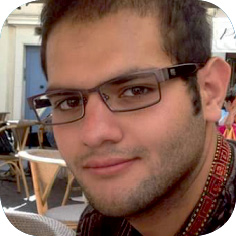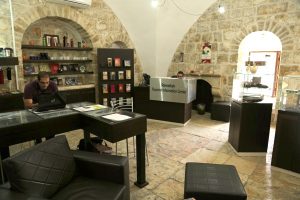Palestine has historically been marked as a religious destination given its status as the cradle of monotheistic belief. Nowadays, the pilgrimage ranks as the top tourism experience in Palestine, especially Christian pilgrimage. Most visitors refer to the country as “the Holy Land,” and this historical yet powerful pilgrimage trend has been the consistent pillar of all tourism activities in Palestine – activities that give priority to the numerous shrines and the impressive archaeological ruins, as well as present-day basilicas and mosques.
The history of pilgrimage to Palestine has created a market from which many Palestinian communities have actually prospered. If one looks at the historical city of Bethlehem, for instance, the neighborhoods have been named after the services rendered to pilgrims by the inhabitants of the city. This is why we have the neighborhood of the interpreters and the neighborhood of the bead makers, to name only two.
The religious branding of Palestine, however, has unfortunately overshadowed the potential of Palestinian culture and society to attract nonreligious tourists and visitors. Thanks to alternative tourism initiatives, there has been an emerging trend of cultural interest which in turn is rebranding Palestine as a destination of interest to all. It is important to note that alternative tourism engages various components of the local society.
For its part, in 2011, the Ministry of Tourism and Antiquities launched a website called Travel Palestine that aims to promote a variety of attractions in the country. In addition, it serves as a source of practical information for visitors. Indeed, Travel Palestine is in part a rebranding project to highlight Palestine as a cultural and social destination with a specific Palestinian identity.

Nevertheless, pilgrimage to the Holy Land remains the prevailing tourism experience, whereas the emerging alternative tourism that focuses on culture, environmental issues, and the political and historical dimensions of Palestine caters to a small market that needs more sophisticated physical and organizational infrastructure to facilitate the visitor experience. Alternative tourists normally travel in small groups or as backpackers. Although credible and dedicated institutions work in the area of alternative tourism to help guide and disseminate key information to cultural tourists, the need to develop this emerging market remains. For this reason, visitors’ centers were created in Palestine.
Today, the Ministry of Tourism and Antiquities has acknowledged seven visitors’ centers in the West Bank. These centers, which aim to provide information to visitors who are already in the country, offer tourist maps, firsthand information about various attractions and how to reach them, and an extended list of interesting activities. Some visitors’ centers also offer guided tours to share basic information with visitors, particularly those visiting a destination for the first time. In addition, visitors’ centers offer practical information about accommodations, cultural events and entertainment, restaurants, the local culture, and more. Tourists from anywhere in the world can access the information and advice they need in order to make their stay as interesting and enjoyable as possible. These resource-rich centers enable visitors to learn about Palestinian culture and civilization.

That said, the visitors’ centers could play a greater role than what appears at first glance. They could be a prime source of information on visitor preferences regarding destinations, sites, and activities. Indeed, the centers collect all sorts of data that could aid tourism planning; nevertheless, there are certain limits. The Ministry of Tourism and Antiquities considers visitors’ centers to be grassroots tools for tourism, situated as they are at the local level and integrated into the local community. For this reason, the centers should have a role in the planning of sites and shrines within the boundaries of their jurisdiction. No doubt, the tasks allotted to visitors’ centers are quite diverse, but they could also play a role in local economic development as well as in spatial and environmental analysis structures. They could create geospatial communication through various regions by planning a visitor’s journey thematically. Moreover, they could contribute valuable input into the marketing strategy of a destination and the planning of tourist infrastructure. Such a role, however, demands more sophisticated and very different qualifications than those linked to the basic operation of the centers, and these qualifications would enable the centers not only to provide and collect data but also to be active actors in managing and planning the destinations landscape. Such ambitions require a radical change of vision and certainly decentralization from lofty hierarchies. More efficient communication is needed between stakeholders, and finally, more work on human resources.
As a destination, Palestine has come a long way in the last 20 years. It is undisputedly one of the most up-and-coming tourist destinations in the region. A new holistic vision of visitors’ centers can only serve to attract even more tourists to the country.



